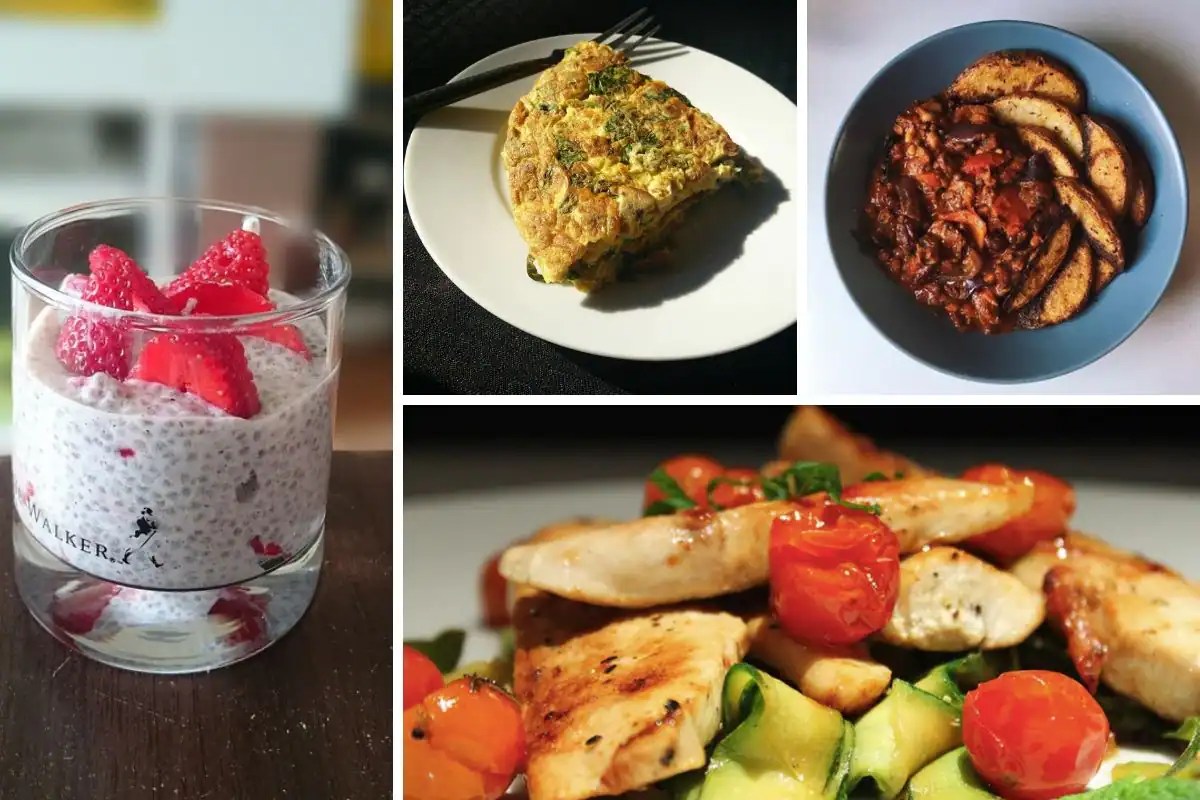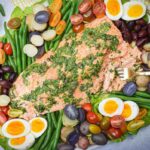Imagine a kitchen where meal preparation is a breeze, grocery shopping a streamlined affair, and delicious, healthy food is always on the table. This is the promise of Banting, a low-carbohydrate, high-fat approach to eating that dramatically simplifies your culinary life. By focusing on simple, whole ingredients and efficient cooking techniques, Banting frees up valuable time and energy, allowing you to enjoy the process of cooking and eating without the usual stress and complexity.
This guide delves into the practical strategies for simplifying your life through Banting recipes. We’ll explore time-saving meal prep techniques, create efficient grocery lists, and offer clear, concise recipes that are both delicious and easy to follow. Discover how to adapt your favorite dishes to fit the Banting lifestyle and unlock a world of flavorful, diverse meals that align perfectly with your busy schedule.
Easy-to-Follow Banting Recipes
Clear and concise recipes are paramount in the Banting way of eating, a low-carbohydrate, high-fat diet. The simplicity of the recipes ensures adherence to the dietary restrictions and minimizes the chances of accidentally consuming prohibited foods. This clarity also makes Banting accessible to beginners, encouraging a smooth transition to a new eating style. The focus is on simple preparation methods and readily available ingredients.
The use of numbered lists for instructions ensures a logical and easily followed process. Bullet points for ingredient lists create a clear and visually appealing overview, allowing for quick assessment of necessary supplies. This structured approach minimizes confusion and encourages consistent results.
Banting Recipe Examples
Here are two examples of Banting recipes, demonstrating the use of numbered lists for instructions and bullet points for ingredients. These recipes showcase the simplicity and deliciousness possible within the Banting framework.
Recipe 1: Creamy Avocado Chicken Salad
- Ingredients:
- 2 cups cooked chicken breast, shredded (Imagine tender, white chicken, slightly moist, with a subtle, savory aroma)
- 1 ripe avocado, mashed (A vibrant green, creamy texture, with a smooth, buttery consistency)
- 1/4 cup mayonnaise (A pale, creamy white emulsion, slightly thick, with a mild, tangy flavor)
- 1 tablespoon lemon juice (A clear, slightly viscous liquid, with a sharp, citrusy aroma)
- Salt and pepper to taste (Fine white crystals and black specks)
- Instructions:
- In a medium bowl, combine the shredded chicken and mashed avocado. (Imagine a bowl filled with a mixture of pale green and white, with a slightly chunky texture)
- Stir in the mayonnaise and lemon juice until well combined. (The mixture becomes smoother and creamier, taking on a brighter, more vibrant green hue)
- Season with salt and pepper to taste. (Tiny white and black specks are distributed evenly throughout)
- Serve immediately or chill for later. (The salad can be served chilled in a small, elegant bowl, showcasing its appealing colors and texture)
Recipe 2: Simple Banting Zucchini Noodles with Pesto
- Ingredients:
- 2 medium zucchini, spiralized into noodles (Bright green, long, thin spirals, firm to the touch)
- 1/4 cup pesto (A vibrant green paste, with a slightly coarse texture, fragrant with basil and garlic)
- 2 tablespoons olive oil (A clear, golden liquid, with a smooth, slightly viscous consistency and a fruity aroma)
- Salt and pepper to taste (Fine white crystals and black specks)
- Instructions:
- Heat the olive oil in a large skillet over medium heat. (The oil shimmers with a gentle heat, creating small, dancing reflections of light)
- Add the zucchini noodles and sauté for 2-3 minutes, until slightly tender-crisp. (The zucchini noodles become slightly softened, retaining a vibrant green color and a pleasant bite)
- Stir in the pesto and season with salt and pepper. (The pesto blends with the zucchini, creating a vibrant green mixture with visible flecks of herbs and nuts)
- Serve immediately. (The dish can be served in a shallow bowl, highlighting the bright green color and appealing texture)
Banting Coconut Flour Pancakes
This recipe provides a detailed, step-by-step guide to making delicious and simple Banting coconut flour pancakes. The visual descriptions aim to paint a picture of the process and the final product.
- Ingredients:
- 1 cup coconut flour (Fine, white powder with a subtle, sweet coconut aroma)
- 4 large eggs (Large, oval-shaped, pale yellow-white eggs with slightly rough shells)
- 1/2 cup unsweetened almond milk (A slightly cloudy, off-white liquid with a delicate nutty aroma)
- 2 tablespoons melted coconut oil (A clear, slightly viscous liquid, with a strong coconut aroma)
- 1 teaspoon baking powder (Fine, white powder)
- Pinch of salt (Fine, white crystals)
- Optional: Sugar-free sweetener to taste (Fine, white or brown powder, depending on the type)
- Instructions:
- In a large bowl, whisk together the eggs, almond milk, melted coconut oil, and sweetener (if using). (The mixture becomes a pale, creamy yellow liquid, smooth and slightly frothy.)
- In a separate bowl, whisk together the coconut flour, baking powder, and salt. (The dry ingredients form a light, fluffy cloud of white powder.)
- Gradually add the dry ingredients to the wet ingredients, whisking until just combined. Do not overmix. (The batter becomes a slightly thick, pale yellow paste, with small lumps of coconut flour visible.)
- Heat a lightly oiled griddle or frying pan over medium heat. (The surface of the pan shimmers with a thin layer of oil, reflecting light.)
- Pour 1/4 cup of batter onto the hot griddle for each pancake. (Small, round pools of pale yellow batter sit on the hot surface.)
- Cook for 2-3 minutes per side, or until golden brown and cooked through. (The pancakes turn a light golden brown, with slightly crisp edges and a soft interior.)
- Serve immediately with your favorite Banting toppings. (The pancakes can be served warm, stacked neatly on a plate, garnished with fresh berries or a dollop of whipped cream.)
Adapting Existing Recipes to Banting

Embarking on the Banting lifestyle doesn’t mean sacrificing your favorite dishes. With a little creativity and understanding of basic nutritional swaps, you can easily transform many traditional recipes into delicious, low-carb alternatives that align perfectly with your Banting goals. The key is to focus on replacing high-carbohydrate ingredients with their low-carb counterparts while maintaining the overall flavor and texture of the original dish.
Converting familiar recipes to Banting versions involves a systematic approach. This process often requires careful consideration of the recipe’s structure, ingredient functions, and desired outcome. Substituting ingredients directly might not always work; sometimes, minor recipe adjustments are necessary to ensure the final dish achieves the desired consistency and taste. The following sections detail methods and examples to guide you through this transformative culinary journey.
Common Ingredient Substitutions for Banting
This section Artikels common high-carbohydrate ingredients found in traditional recipes and their suitable Banting alternatives. Understanding these substitutions is crucial for successfully adapting your favorite dishes. The substitutions presented below aim to preserve the overall texture and flavor profile of the original recipe as closely as possible. Remember that experimentation is key to perfecting your Banting adaptations.
| Traditional Ingredient | Banting Substitute | Nutritional Comparison | Recipe Adjustment Notes |
|---|---|---|---|
| White Bread | Almond Flour Bread/Cloud Bread | White bread is high in carbohydrates and low in fiber; almond flour bread offers significantly fewer carbs and more healthy fats and fiber. Cloud bread is extremely low in carbs. | For bread-based recipes, simply replace white bread with an equivalent amount of almond flour bread or cloud bread. You may need to adjust baking times slightly. |
| Sugar | Stevia, Erythritol, Xylitol (use sparingly) | Sugar is pure carbohydrate; these sweeteners offer minimal to no carbohydrate impact, though some have different caloric values. | Use approximately half the amount of the chosen sweetener compared to sugar; taste and adjust as needed. Be mindful of the different sweetness levels. |
| Pasta | Zucchini Noodles, Shirataki Noodles | Pasta is high in carbohydrates; zucchini noodles are low in carbohydrates and high in nutrients; shirataki noodles are extremely low in carbohydrates and calories. | Zucchini noodles require less cooking time. Shirataki noodles require rinsing thoroughly before use to remove any lingering odor. |
| Potatoes | Cauliflower Mash, Rutabaga Mash | Potatoes are high in carbohydrates; cauliflower and rutabaga are significantly lower in carbohydrates and offer different textures and flavors. | Cauliflower mash requires more seasoning to replicate the potato taste. Rutabaga offers a sweeter, earthier flavor. |
Nutritional Comparison: Traditional vs. Banting Spaghetti Bolognese
Let’s compare a traditional Spaghetti Bolognese recipe with its Banting counterpart. A traditional recipe using 100g of pasta might contain approximately 70g of carbohydrates. A Banting version using zucchini noodles (100g) would contain significantly fewer carbohydrates, perhaps only around 5g, while maintaining a similar protein and fat content from the meat and tomato sauce. This substantial reduction in carbohydrates highlights the core principle of the Banting diet. The Banting version might require slightly more seasoning to compensate for the different taste and texture of the zucchini noodles. The nutritional differences are striking, illustrating the potential health benefits of adopting Banting principles.
Embracing Banting isn’t just about weight loss; it’s about reclaiming control over your kitchen and your time. By streamlining your grocery shopping, mastering efficient cooking methods, and utilizing versatile recipes, you can transform your relationship with food. The journey to a simpler, healthier lifestyle begins with a few well-chosen recipes and the understanding that delicious and easy can go hand in hand. This guide provides the tools and inspiration to make Banting a sustainable and enjoyable part of your life, enriching your culinary experience without sacrificing flavor or convenience.
Top FAQs
Can I still enjoy desserts on a Banting diet?
Absolutely! Many delicious desserts can be made using Banting-friendly substitutes like almond flour, coconut flour, and sugar alternatives. Numerous online resources and cookbooks offer creative Banting dessert recipes.
Is Banting suitable for everyone?
While Banting can be beneficial for many, it’s crucial to consult your doctor or a registered dietitian before making significant dietary changes, especially if you have pre-existing health conditions.
How do I manage cravings on a Banting diet?
Staying hydrated, ensuring adequate protein intake, and focusing on nutrient-dense, satisfying meals can help manage cravings. Identifying and addressing any underlying emotional triggers for cravings is also beneficial.
Are there any potential downsides to the Banting diet?
Potential downsides can include nutrient deficiencies if not carefully planned, digestive issues for some individuals, and the potential for social challenges when eating out.


